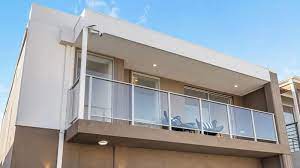
Breaking News
 Trump Claims $18 Trillion in Tariff Revenue, Health Care Costs Down 1000%
Trump Claims $18 Trillion in Tariff Revenue, Health Care Costs Down 1000%
 WATCH: US Attorney Announces Rob Reiner's Son Charged with 2 Counts of First Degree Murder...
WATCH: US Attorney Announces Rob Reiner's Son Charged with 2 Counts of First Degree Murder...
 Trump Orders Full Blockade Of Sanctioned Oil Tankers Off 'Terrorist' Venezuela
Trump Orders Full Blockade Of Sanctioned Oil Tankers Off 'Terrorist' Venezuela
 Side Effects Of 30 Antidepressants Ranked And Compared: Lancet Study
Side Effects Of 30 Antidepressants Ranked And Compared: Lancet Study
Top Tech News
 This tiny dev board is packed with features for ambitious makers
This tiny dev board is packed with features for ambitious makers
 Scientists Discover Gel to Regrow Tooth Enamel
Scientists Discover Gel to Regrow Tooth Enamel
 Vitamin C and Dandelion Root Killing Cancer Cells -- as Former CDC Director Calls for COVID-19...
Vitamin C and Dandelion Root Killing Cancer Cells -- as Former CDC Director Calls for COVID-19...
 Galactic Brain: US firm plans space-based data centers, power grid to challenge China
Galactic Brain: US firm plans space-based data centers, power grid to challenge China
 A microbial cleanup for glyphosate just earned a patent. Here's why that matters
A microbial cleanup for glyphosate just earned a patent. Here's why that matters
 Japan Breaks Internet Speed Record with 5 Million Times Faster Data Transfer
Japan Breaks Internet Speed Record with 5 Million Times Faster Data Transfer
 Advanced Propulsion Resources Part 1 of 2
Advanced Propulsion Resources Part 1 of 2
 PulsarFusion a forward-thinking UK aerospace company, is pushing the boundaries of space travel...
PulsarFusion a forward-thinking UK aerospace company, is pushing the boundaries of space travel...
 Dinky little laser box throws big-screen entertainment from inches away
Dinky little laser box throws big-screen entertainment from inches away
 'World's first' sodium-ion flashlight shines bright even at -40 ºF
'World's first' sodium-ion flashlight shines bright even at -40 ºF
Two-story family home was 3D-printed in just 18 hours

The project is located in Tapping, Perth, and is the only 3D-printed house we've seen where both floors are actually printed, except for the experimental Kamp C project. This means that the build process is streamlined and sped up, compared to having to install an extra timber shell, like Icon's Mueller homes.
Essentially, a large 3D-printing robot made by the Netherlands' CyBe extruded a cement-like mixture in layers to build the basic shell of the house on-site. This process is the part that took 18 hours. However, we should point out that from there, human builders were then brought in to add the roof, wiring, flooring, and everything else required to turn a shell into a livable home. This lasted a lot longer and in total, the entire project took five months to realize.
"Contec's specialized concrete mix prints walls layer by layer, without the need for formwork or scaffolding," explains the firm. "The mix is self-supporting, sets hard in under three minutes, and reaches 50MPa [megapascal, a unit used to measure compressive strength], more than three times the strength of standard bricks (15MPa). The walls are cyclone rated, thermally efficient, termite proof, and both fire and water resistant making them a strong fit for WA's metro and regional conditions."
The completed home looks well made and modern. It features a mixture of both the telltale "ribbed" wall finish of a 3D-printed home and smoother walls. Three bedrooms and two bathrooms are included too, along with a garage area, and a small balcony. There's also lots of daylight inside thanks to generous glazing.
We've no word on the exact cost of the home, but we reached out to Contec Australia and a representative told us that the home came in 22% cheaper compared to a standard local masonry house using traditional construction methods.



